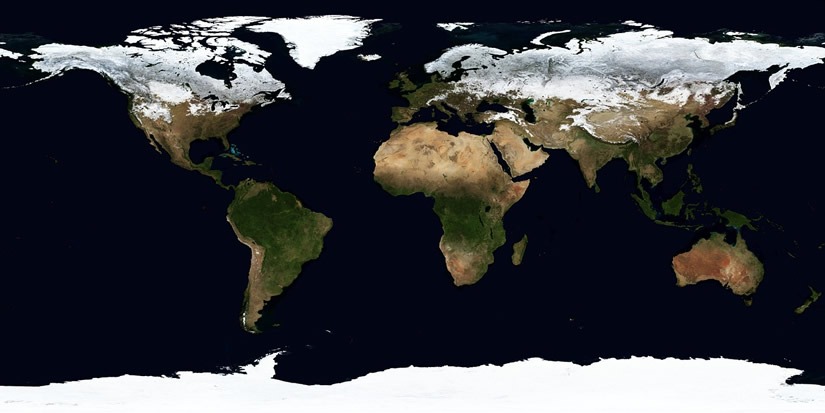By JustMarkets
On Tuesday, the Dow Jones (US30) Index was up 0.02%. The S&P 500 Index (US500) added 0.24%. The Nasdaq Technology Index (US100) was up 0.23%. Weakness in the consumer staples and communication services sector, highlighted by a 2.7% drop in Meta Platforms shares and a 0.9% decline in Amazon shares, pressured the broader market. However, energy stocks excelled, with Exxon Mobil up 1.8% and Energy Transfer up 1.6%. Market participants are keeping a close eye on policy decisions by the Fed and the White House, especially on tariffs and interest rates.
The Canadian dollar weakened to 1.42 per US dollar, halting its rebound from a 22-year low of 1.455 on January 31, as investors digested mixed inflation data. Annual inflation rose to 1.9% in January from 1.8%, staying at or below the Bank of Canada’s 2% target for the 6th consecutive month and supporting expectations of further easing. While higher gasoline prices led to the increase, tax incentives helped lower food costs. Nevertheless, key indicators such as median and truncated average rates remained at a high of 2.7%, above expectations.
Equity markets in Europe were mostly up on Tuesday. Germany’s DAX (DE40) rose by 0.20%, France’s CAC 40 (FR40) closed 0.21% higher, Spain’s IBEX 35 (ES35) gained 0.98%, and the UK’s FTSE 100 (UK100) closed negative 0.02%. The ZEW Economic Sentiment Indicator for Germany for February 2025 rose 15.7 points to 26, exceeding market expectations of 20 and reaching its highest level since July 2024. It also marked the largest increase in investor confidence since January 2023, ahead of the federal elections, as optimism grew that the new German government would be able to act. Investors also kept an eye on peace talks between Russia and Ukraine and speculated on increased defense spending in Europe. The US and Russian diplomats agreed to set up negotiating teams, although an informal summit of European leaders in Paris ended without concrete action as a proposal to send peacekeeping troops to Ukraine remains divisive.
WTI crude oil prices held near $72 a barrel on Tuesday as diplomatic talks between the US and Russia aimed at ending the war in Ukraine boosted hopes of reduced geopolitical risks. Hopes for an end to the war in Ukraine rose after talks between Russia and the US, but officials warned that one meeting would not ensure a lasting peace.
Asian markets were mostly down on Tuesday. Japan’s Nikkei 225 (JP225) was up 0.25%, China’s FTSE China A50 (CHA50) was down 0.10%, Hong Kong’s Hang Seng (HK50) decreased by 1.59% and Australia’s ASX 200 (AU200) was negative 0.66%.
The RBNZ cut the official money rate by 50bps to 3.75%, bringing the total amount of easing over the past six months to 175bps. The decision came amid signs of slowing inflation, with policymakers keen to revive the struggling economy. While the Central Bank indicated that further easing was possible, it signaled that future steps would be more modest and that the end of the easing cycle was approaching. Governor Adrian Orr hinted at a possible 25bp rate cut in April and May, which would bring the money rate closer to the neutral range from 3.0%.
The offshore yuan depreciated to 7.28 per dollar, marking the third straight session of losses, after US President Donald Trump announced new tariff plans. On Tuesday, Trump unveiled plans to impose 25% tariffs on automobiles, as well as similar duties on semiconductors and pharmaceutical products. Further influencing the sentiment was Donald Trump Jr, the president’s eldest son, noting that the US should be prepared to confront any potential military challenges from China while remaining open to diplomatic talks with its rival.
S&P 500 (US500) 6,129.58 +14.95 (+0.24%)
Dow Jones (US30) 44,556.34 +10.26 (+0.02%)
DAX (DE40) 22,844.50 +46.41 (+0.20%)
FTSE 100 (UK100) 8,766.73 −1.28 (−0.02%)
USD Index 107.03 +0.46 (+0.43%)
News feed for: 2025.02.19
- Japan Trade Balance (m/m) at 01:50 (GMT+2);
- Australia Wage Price Index (m/m) at 02:30 (GMT+2);
- New Zealand RNBZ Interest Rate Decision at 03:30 (GMT+2);
- New Zealand RNBZ Monetary Policy Statement at 03:30 (GMT+2);
- New Zealand RNBZ Press Conference at 04:00 (GMT+2);
- UK Consumer Price Index (m/m) at 09:00 (GMT+2);
- US Building Permits (m/m) at 15:30 (GMT+2);
- US FOMC Meeting Minutes at 21:00 (GMT+2).
By JustMarkets
This article reflects a personal opinion and should not be interpreted as an investment advice, and/or offer, and/or a persistent request for carrying out financial transactions, and/or a guarantee, and/or a forecast of future events.






 Article by
Article by 








